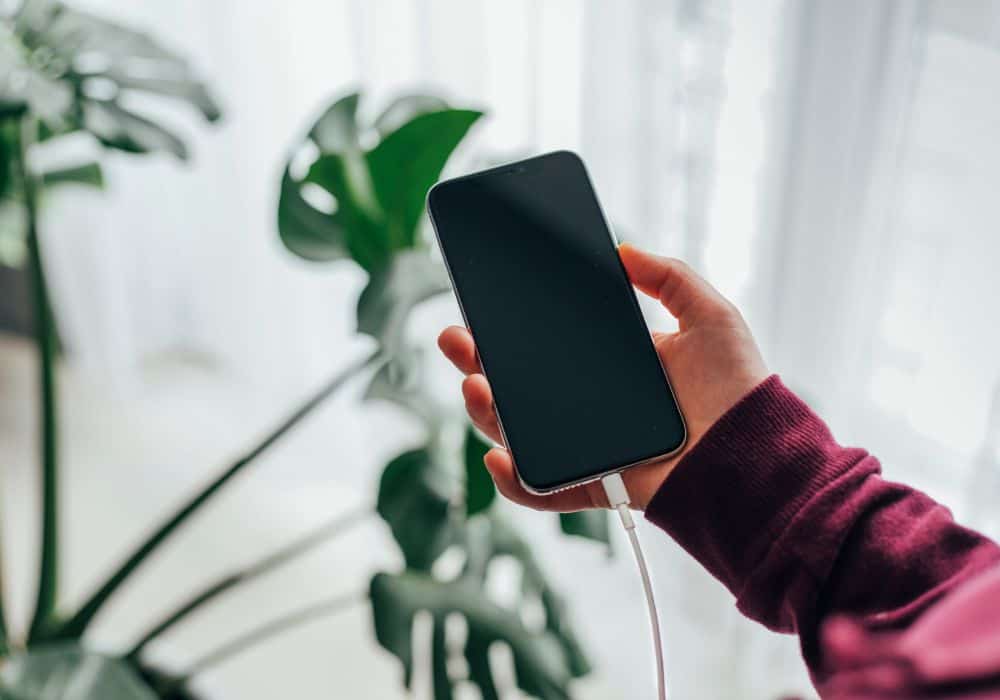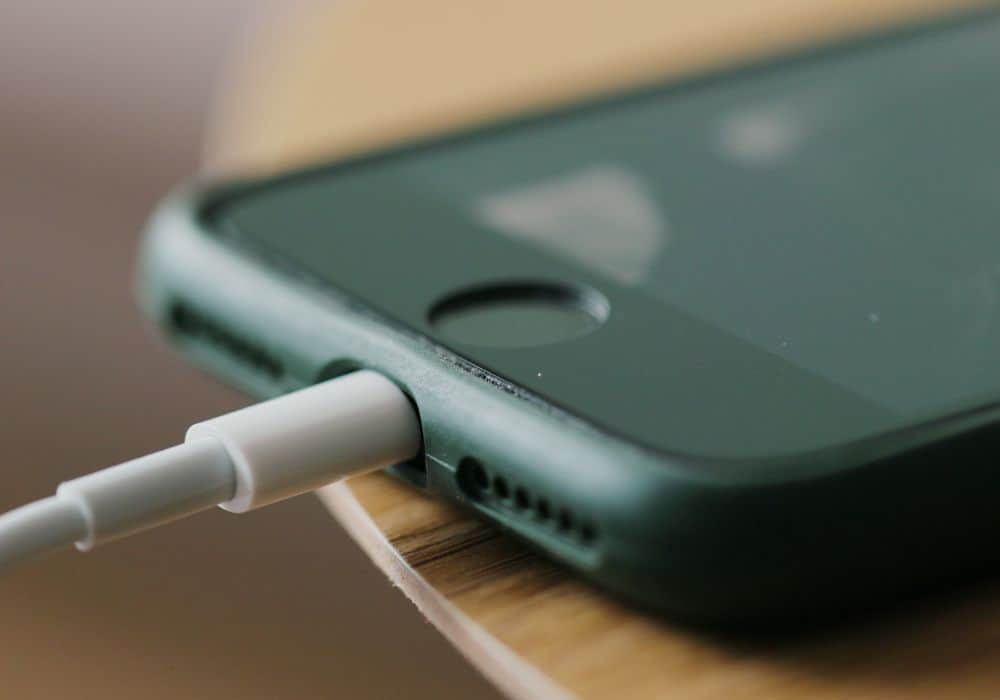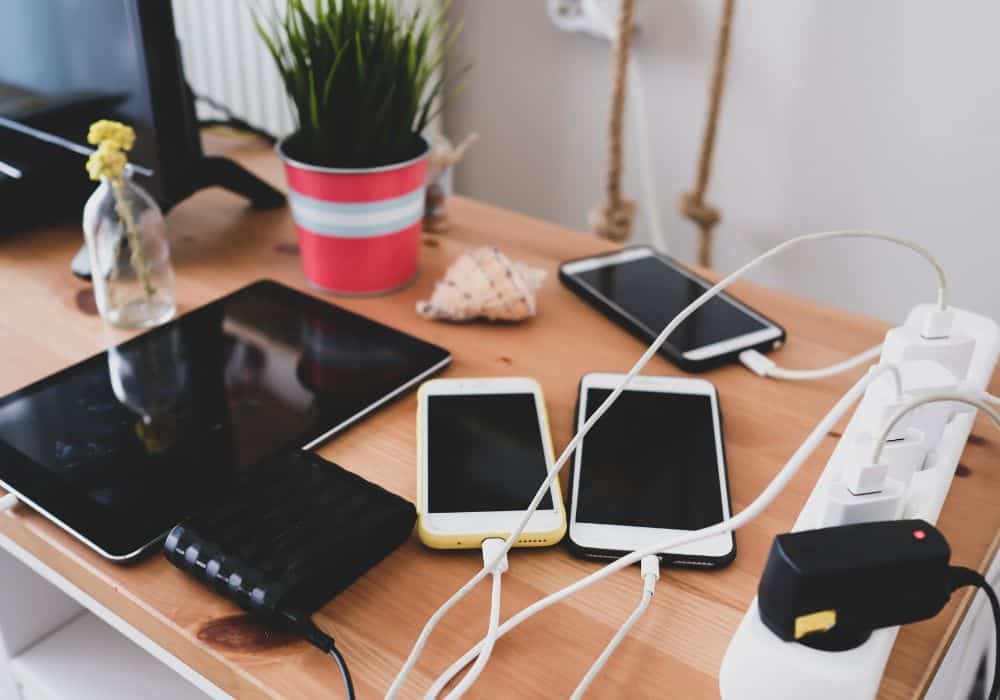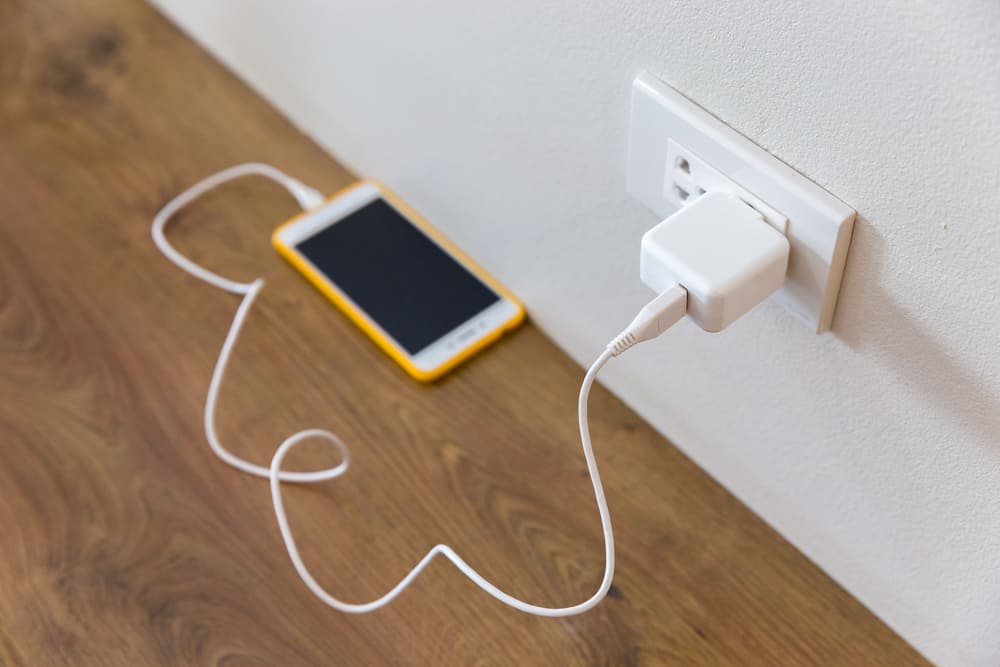There’s nothing quite as inconvenient and frustrating as not being able to use your phone. Do you leave your phone charging for hours only to find out the battery still needs to be charged? Your phone taking ages to charge can occur because of several issues.
Keep scrolling to learn the reasons behind your slow-charging phone, the solutions, and ways to optimize the battery for fast charging and longer battery life.
Why Is My Phone Charging Slowly?

1. Checking The Connections
- Charger Not Plugged In
A typical reason for your phone charging slowly can be a faulty connection. Either the power adapter might be partially plugged into the wall socket, or the charging cable might be incorrectly inserted in the adapter port or the phone’s charging port.
Ensure the charging cable is correctly plugged in. If the issue doesn’t resolve, review the other reasons below for further troubleshooting.
- Faulty Cable or Charger
A faulty charger or a USB cable can also be the culprit here. If either one is damaged or malfunctioning, the amperage, and voltage get affected. Furthermore, an old charger or cable cannot carry adequate wattage to charge the battery quickly.
You can check the cable and adapter for any visible damage or wear and tear. If you find significant damage, it’s best to replace the accessories for effective results.
2. Checking Background Apps
Phones typically run apps in the background, resulting in battery usage when idle. If your phone has any power-intensive app, it might be the reason for your slow charging phone. Here’s how you can check the app’s background activity.
Step 1: From the menu, select the settings icon.
Step 2: Tap on the battery option.
Step 3: Now click on battery usage.
Step 4: Apps using the most battery will be displayed.
Step 5: You can click on the apps to see the detailed battery usage.
Step 6: If you want to stop the app, tap on force stop to restrict it from running in the background.
Most smartphones nowadays come with built-in optimizers that monitor memory and phone usage and allow users to boost performance with a few taps. Most optimizers prompt the user if they notice an app doing too much background activity. One alternative to the built-in optimizers is a dedicated cleaner phone app, which you can easily download and install on your phone.
- Disabling Features
Check whether the Bluetooth, WiFi, or GPS is on and restrict its background activity to conserve battery when charging. It’s recommended to offload unused apps, limit the background activity of apps using too much battery, and clear the app’s cache, allowing it to charge stably.
3. Using The Phone While Charging

Whether it’s an iPhone, android smartphone, or laptop, the device will charge slowly while being used while plugged in. Similar to your phone’s battery being charged, it discharges when used. Even using a fast charger might not resolve the issue.
Make it a habit of taking a screen break, allowing your phone to charge much sooner. If you want to charge the phone even quicker, consider turning on airplane mode.
4. High Temperature
Charging the phone in hot environments deteriorates the battery performance and slows the charging speed. Avoid plugging in the phone in areas with direct sunlight, like a windowsill during a hot day.
Find a cool place, preferably indoors, for better charging. Most android phones and iOS devices nowadays warn you if the temperature rises too high and will turn off automatically to prevent any damage.
5. Clogged Cable
Dirt, lint, and debris develop over time in the crevices of the charging port. Removing it can resolve the slow charging issue. You can use a compressed air can to brush off the dust and use a toothpick to scrape debris from the USB ports. Remember to clean the phone’s charging port using compressed air and a soft brush.
However, in the worst-case scenario, there’s a possibility the charging port has rusted or worn out, making it difficult for the charging pin to stay in place. In this situation, take your phone to a certified mobile repair professional or the manufacturer’s recommended repair shop for effective repair or replacement.
6. Using Wireless Charging
Although wireless charging is convenient, it could be less efficient than the conventional wall charger. The Qi wireless charging provides 7.5 watts compared to the 15 to 25-watt average most wall chargers provide.
Your corded charger will work more efficiently than most wireless chargers, except for iPhone models using MagSafe technology. This tech allows the phone to receive 15 watts of power which is almost two folds than a conventional wireless charger.
7. Poor Power Source

Using alternative means of charging your phone can take much time to set. For example, your wall charger will charge the phone’s battery better than a laptop or car used as a power source.
This happens because sources like laptops and car chargers provide limited power, not the wattage your phone requires. These sources will eventually charge your phone but will take a lot of time to complete.
8. Dying Or Old Battery
While several materials are used to make phone batteries, lithium-ion batteries are the preferred type commonly used in phones. Over time, these batteries lose their capacity to hold the charge and deteriorate in terms of performance.
You’ll see these changes over two to three years. The most obvious sign is that the battery will deplete quickly after charging and takes a lot of time to reach 100 percent. Leaving your phone charging for several hours, continuously using the phone over extended periods, and operating the phone in hot environments are some causes that lead to a damaged battery.
Repairing a damaged or faulty battery is never a feasible option. It’s best to replace the battery; otherwise, it can further damage the phone’s internal components and cause performance issues.
9. Using An Old Phone
If you use an old phone, its performance will differ from when you purchased it. Older phone models have batteries and internal components incompatible with fast-charging accessories and could be more effective in providing power.
If you are encountering errors, poor phone performance, and system crashes, upgrading the smartphone is better than replacing its battery.
Tips To Optimize Battery Performance
1. Using The Right Accessories
Visit your phone manufacturer’s website to get recommendations on which charging type is compatible with your phone. While earlier phone models used a USB power delivery system, recent models used Qualcomm quick charge.
These types provide varying voltage and amperage, making each type feasible for specific phone models. Therefore, ensure you are using the right accessories for effective charging.
2. Updating and Factory Reset
If you have an android device cluttered with android apps from unknown sources, consider doing a factory reset and a software update, making your phone run on optimum performance.
A reset cleans the internal memory, previous registry files, and any unwanted changes the apps make to your phone. Updating the phone is crucial, as most software updates include bug fixes for better battery performance. Before you reset, the phone remembered to back up your data.
Here’s how to factory reset an android phone.
Step 1: From the menu, click on the settings app.
Step 2: Now scroll to the system option and tap it.
Step 3: Select the option of factory reset located at the bottom of the page.
Step 4: If you have a security password, type it in and wait a few minutes for the phone to reset automatically.
Step 5: Your phone might restart several times during the process. Therefore, stay calm and let the phone erase all its data.
3. Turning Off The Phone
Simply turning off the phone can boost the charging speed by many folds. While it might be hard to turn off your phone, it will shorten the average time your phone takes to charge completely.
4. Removing The Case
If you have a phone case, it can cause an increase in the phone’s internal temperature, resulting in slow charging. Ensure to remove the phone case, especially on hot days.
5. Optimizing The Battery
Apple and Android users can tweak their phone’s battery performance by toggling on the battery performance option. Here’s a walkthrough for iPhone users with iOS version 13 or later.
Step 1: Go to settings and find the battery option.
Step 2: Tap on the battery option and then click on battery health.
Step 3: Now check the option ‘optimized battery charging.‘
For Android Users (Samsung Galaxy users):
Step 1: Go to settings and select device care.
Step 2: Tap on the option ‘optimize now’ for quick optimization.
Different android phone manufacturers include varying ways to optimize the battery. It’s best to check the user manual and read instructions to use this feature.
Final Thoughts
Before buying a new smartphone or replacing your charging adapter, try troubleshooting while considering the information we shared, as it might be fixable. There’s no denying that batteries have a limited life.
The lithium-ion batteries used in phones last up to three years. Replacing the battery or upgrading your smartphone is the only choice if you have tried everything in your capacity and still aren’t successful.
